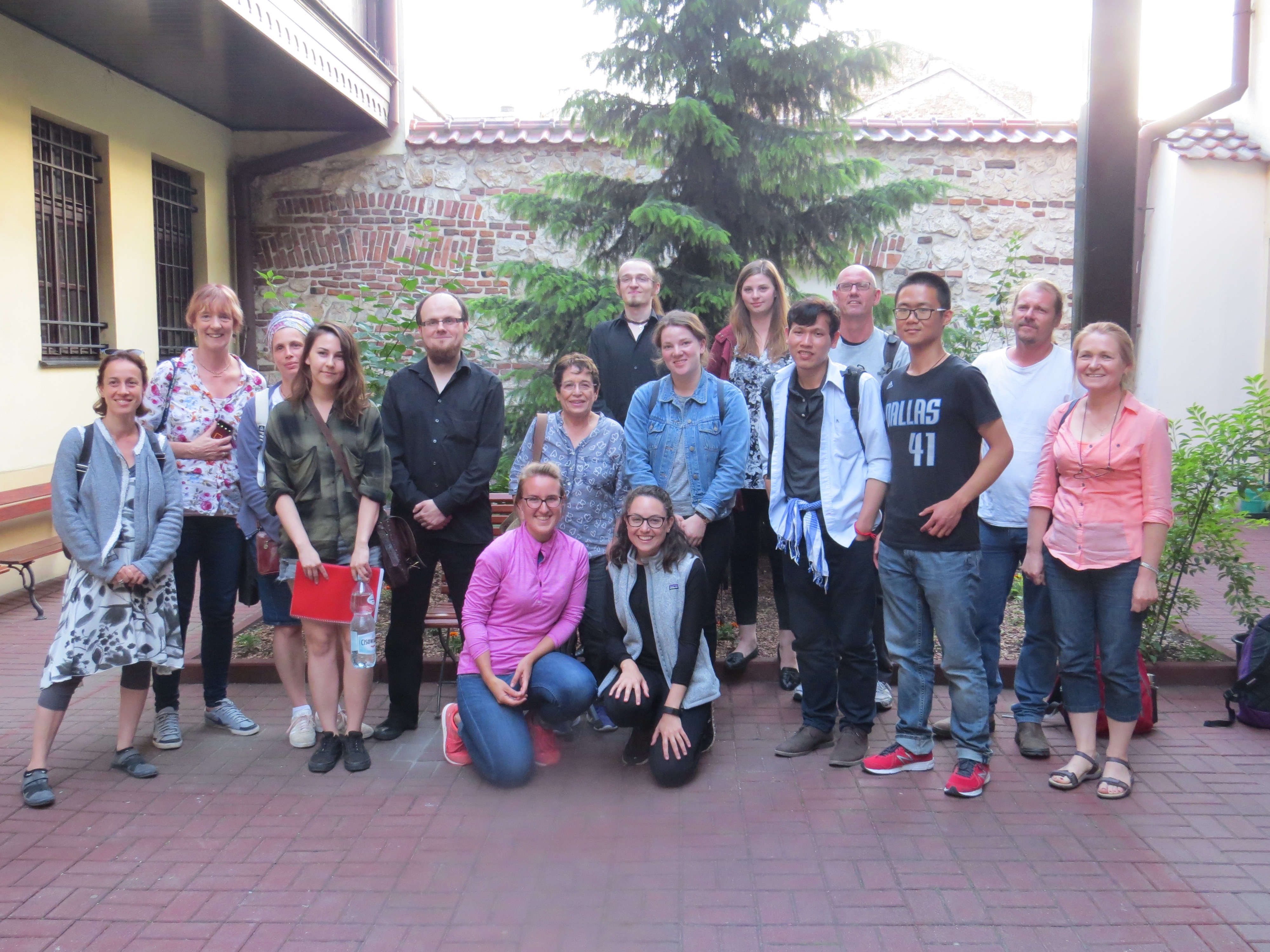
The Jewish History of Krakow
The Weiss-Livnat International MA Program
in Holocaust Studies at the University of Haifa Blog
 Our students meeting with students from the Jagiellonian
Our students meeting with students from the Jagiellonian
While in Krakow, we visited the Jewish Studies students of Jagiellonian University. At the Jewish Studies Center, in the heart of the vibrant Jewish Quarter in Krakow, the students study Yiddish, Jewish History specifically in Poland, and the Holocaust. We divided into small groups and met with a selection of students. We talked about different research projects and research ideas, they exchanged resources and angles for their studies. It was a pleasure to meet with these scholars and learn a Polish perspective on the Holocaust.
 Our students with students from Jagiellonian University
Our students with students from Jagiellonian University
After our meeting with these students we explored the lively Jewish Quarter in Krakow. In the streets you can find markets, which have been preserved since pre-Holocaust Poland. You can also find bookshops selling books in Yiddish and Hebrew.
 Our group in the Remah Synagogue
Our group in the Remah Synagogue
Many of the synagogues in the area have been converted to museums and are no longer active, but they still tell the long story of Jews in Poland. Many of the buildings there have murals of Jewish life with Yiddish text. Though there aren’t many Jews left in Krakow, their lack of presence is noted, it is not ignored. The people of Krakow keep the memory of the Jews that used to live amongst them alive.
The next day we took a tour through Krakow. First we stopped at the Remah Synagogue and the accompanying cemetery. The synagogue was named after Rabbi Moses Isserles, whose name abbreviated is Ramah. Rabbi Moses Isserles was an eminent Polish Ashkenazi Rabbi, and talmudist.
 Our group at the grave of Rabbi Yom-Tov Lipmann Heller.
Our group at the grave of Rabbi Yom-Tov Lipmann Heller.
Another important rabbi, Rabbi Yom-Tov Lipmann Heller, was buried here in the back of the cemetery in a lowly and otherwise forgotten part next to Yossele the Holy Miser. The Rabbi asked to be buried next to him as a great honor. Yossele the Holy Miser is something of a Jewish legend from the medieval ages. According to the lore, Yossele the Holy Miser was the richest Jew in Krakow, but he refused to give tzedakah (charity) to the synagogue or those less fortunate, or so they thought. After Yossele the Holy Miser died the community buried him in the back of the cemetery, thinking he was a stingy and greedy man. Much to their surprise he had been providing for less fortunate families all over the city. Many families came to the Rabbi and said they had been given mysterious weekly allowances on their front porches. It became apparent to the Rabbi that Yossele the Holy Miser had been anonymously giving to them over many years. Many consider this form of tzedakah, anonymous giving, as the highest form of charity. According to the story, the rabbi of this story was Rabbi Yom-Tov Lipmann Heller, and this is why he asked to be buried in the back of the cemetery, next to Yossele the Holy Miser.
Interested in applying for our MA in Holocaust Studies Program? You can find the application and more information at our website
twoje uwagi, linki, wlasne artykuly, lub wiadomosci przeslij do: webmaster@reunion68.com
